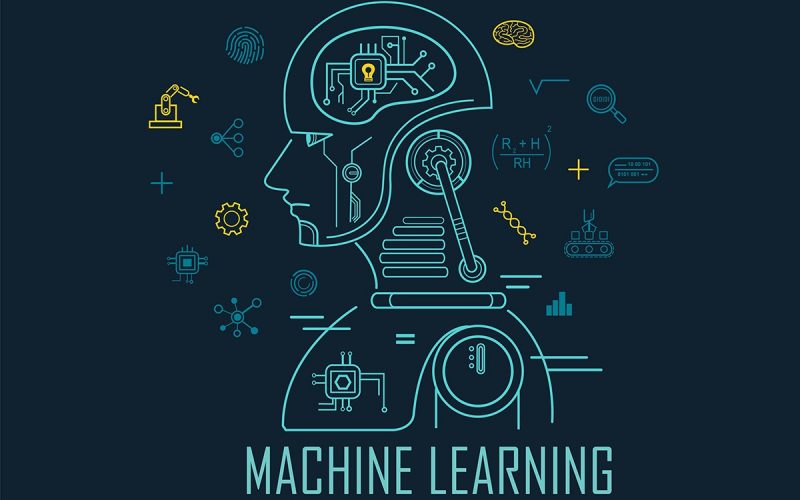Machine learning is a data analysis technique that automates the creation of analytical models. Moreover, It is a branch of artificial intelligence that is predicated on the premise that systems can learn from data. Plus spot patterns, and implement decisions with little or no human intervention. This study will basically show what is Machine learning, Types, Examples, and Course.
What Is the Significance of Machine Learning?
Similarly, the same dynamics that have made data mining and Bayesian analysis more popular than ever are driving renewed interest in machine learning. Furthermore, things like increasing data volumes and variety, cheaper and more powerful computing processing, and low-cost data storage.
All of this means that models can be created rapidly and automatically. That can even evaluate larger, more complicated data and offer faster, more accurate answers – even on a massive scale. And so by developing detailed models, a company improves its chances of recognizing valuable possibilities – or avoiding unexpected risks.
Types of Machine Learning
Here are different types of Machine Learning
Types of Machine Learning: Supervised
The machine is taught by example in supervised learning. Meanwhile, the operator gives the machine algorithm a known dataset with desired inputs and outputs. And the system must figure out how to get those inputs and outputs.
Although the operator is aware of the proper solutions to the problem. The algorithm recognizes patterns in data, learns from observations, and generates predictions. Furthermore, the algorithm creates predictions, which are then rectified by the operator, and this process is repeated until the algorithm reaches a high degree of effectiveness.
Firstly, Classification, Secondly, regression, and Finally, forecasting are all subsets of supervised learning.
Classification: Under classification tasks. The machines learning computer must finally conclude from observed data and select whether or not to perform the task.
What category do new observations go into? When screening emails as ‘spam or ‘not spam,’. For instance, the program must examine existing observational data and filter the emails appropriately.
Regression: This challenge requires the machines learning algorithm to estimate – and comprehend – the relationships between variables. In addition, regression analysis is specifically beneficial for prediction and forecasting. Since it centers on one dependent variable and a sequence of other changing variables.
Forecasting: is the practice of predicting the future based on past and present facts, and it is widely used to analyze patterns.
Types of Machine Learning: Semi-supervised
Semi-supervised learning is quite similar to supervised learning. In the sense that it employs both labeled and unlabeled data. Moreover, labeled data is information that has relevant tags so that the algorithm can interpret it. Whereas unlabeled data does not have that information. By utilizing this
Machines learning algorithms, when combined, can learn to categorize unlabeled data.
Types of Machine Learning: Learning without supervision
In this case, the machine learning algorithm examines data to detect patterns. Meanwhile, there is no response key or human operator to provide guidance. Rather, by analyzing accessible data, the machine determines correlations and associations. Moreover, the machine algorithm is left to understand big data sets. And also address that data in an unsupervised learning process. But then the algorithm attempts to organize that data to describe its structure. This could, however, Imply grouping the data into clusters or arranging it in a more organized manner.
As it evaluates additional data, its ability to make decisions based on that data increases and becomes more refined
The following activities are under the scope of unsupervised learning:
Clustering is the process of grouping collections of comparable data (based on defined criteria). It is essential for segmenting data into different groups and analyzing each data set to uncover trends.
Dimension reduction is the process of reducing the number of variables in the investigation to get the exact information required.
Types of Machine Learning: Through reinforcement
Reinforcement learning is concerned with regimented learning procedures. In which a machine algorithm is a set of actions, parameters, and end values to follow. Following the definition of the rules, the machine learning algorithm attempts to explore several options and possibilities. Thereby monitoring and assessing each output to determine which is ideal. Additionally, reinforcement learning instructs the machines through trial and error. Moreover, It learns from previous experiences and begins to adjust its strategy in reaction to the situation to attain the greatest potential outcome.
Read Also: 5 Uses of Machine Learning in the Workplace
Machine Learning Examples
Recognizing images
In the real world, image recognition is a well-known and widely used example of digital learning. Moreover, It can recognize an object as a digital image depending on the pixel intensity in black-and-white or color photographs.
Real-world Image Recognition Machine Learning Examples:
First Example: Classify an x-ray as malignant or non-cancerous.
Second Example: Give a name to a photographed face (also known as “tagging” on social media).
Third Example: Handwriting recognition is accomplish by dividing a single letter into smaller pictures.
It is also often employ for image-based facial identification. The technology can discover commonalities and match them to faces by using a database of people. This is a term that is frequently use in law enforcement.
Recognition of speech
Machine learning is capable of converting speech to text. Plus live voice and record speech can both be turn into text files by some software solutions. Intensities on time-frequency bands can also be use to segment speech.
Real-world Speech Recognition Machine Learning Examples:
Firstly, Search by voice
Secondly, Dialing a phone number
Thirdly, the Appliance command
Devices such as Google Home and Amazon Alexa are examples of how speech recognition software is in use.
Medical evaluation
Machines learning can aid in disease diagnosis. Moreover, many doctors utilize chatbots with speech recognition to identify patterns in symptoms.
Examples Machine Learning of real-world medical diagnosis:
- Assisting in the formulation of a diagnosis or recommending a course of treatment
- it is use in oncology and pathology to identify malignant tissue.
- Examine bodily fluid In rare case of diseases, the combination of facial recognition software and machines learning allows for the scanning of patient images. Plus the identification of phenotypes associated with uncommon genetic diseases.
Statistical hedging
Arbitrage is a finance-related automated trading approach used to manage a huge volume of securities. However, a trading algorithm is used in the approach to analyze a group of securities utilizing economic data and correlations.
Machine Learning Examples of statistical arbitrage in the real world:
Algorithmic trading that examines the microstructure of a market
Analyze enormous amounts of data
Recognize real-time arbitrage opportunities.
Machines learning improves the arbitrage approach by optimizing it.
Predictive analytics
Machine learning can categorize accessible data into groupings, which can subsequently be specified by rules defined by analysts. However, once the classification is complete, the analysts can compute the likelihood of a failure.
Machine Learning Examples of predictive analytics in action:
- Determining if a transaction is fraudulent or legal
- Improve prediction methods for calculating the likelihood of a problem.
One of the most promising applications of machines learning is predictive analytics. It can be use for everything, from product creation to real estate pricing.
Extraction
Structured information can be extracted from unstructured data using machine learning. Organizations amass massive amounts of data from their clients. Furthermore, the process of annotating datasets for predictive analytics tools is automated using machines learning algorithms.
Machine Learning examples of extraction from the real world:
Create a model that can anticipate vocal cord abnormalities.
It creates strategies for preventing, diagnosing, and treating illnesses.
Assist doctors in swiftly diagnosing and treating problems.
Usually, these procedures are time-consuming. Machine learning, on the other hand, can track and extract information from billions of data samples
With Machine Learning, the future is brighter
Machine learning is a wonderful artificial intelligence technology. Machine learning has already transformed our daily lives and the future in its early applications
Check out the Personalisation Builder if you’re ready to apply machine learning to your business strategy and generate customized experiences. Use predictive analytics and modeling to learn about each customer’s preferences!
Machine Learning Course
Machine Learning Course: One Variable Linear Regression
Based on an input value, linear regression predicts a real-valued output. We discuss the use of linear regression to predict housing prices, introduce the concept of a cost function, and introduce the gradient descent learning method.
Machine Learning Course: Review of Linear Algebra
This optional module refreshes students on linear algebra concepts. A fundamental understanding of linear algebra is required for the remainder of the course, particularly as we begin to cover models with multiple variables.
Machine Learning Course: Multiple Variable Linear Regression
What if your input contains multiple values? This module demonstrates how linear regression can be extended to take into account multiple input features. We also go over the best practices for putting linear regression into action.
Machine Learning Course: Tutorial for Octave/Matlab
This course includes programming assignments that will help you understand how to put the learning algorithms into practice. Secondly, you will need to use Octave or MATLAB to complete the programming assignments. This module introduces you to Octave/Matlab and walks you through the process of submitting an assignment.
Machine Learning Course: Regularization
Machine learning models must be able to generalize well to new examples that the model has never seen before. Additionally, we introduce regularization in this module to help prevent models from overfitting the training data.
Machine Learning: Representation in Neural Networks
Neural networks are a model that is based on how the brain works. Furthermore, it is widely used in many applications today. when your phone interprets and understands your voice commands, a neural network is most likely assisting in understanding your speech. Again, when you cash a check, the machines that automatically read the digits also use neural networks.
What Is the Most Effective Language for Machine Learning?
Although slower, lower-level languages (like R, C++, or Java) are more difficult to master. Higher-level languages (like Python and JavaScript) are quicker to learn but slower to use. Python is a vital language for data analytics and machine learning.
What Distinguishes AI From Machine Learning?
AI is used by “intelligent” computers to mimic human thought and carry out independent activities. The process by which a computer system becomes intelligent is called machine learning. Using a neural network, which is a collection of algorithms based on the human brain, is one method for teaching a computer to imitate human reasoning.
Is Math Necessary for Machine Learning?
Machine learning relies heavily on math to help create algorithms that can learn from data and make accurate predictions.
Is Coding Required for Machine Learning?
Yes, some coding experience is required if you want to work in the fields of artificial intelligence and machine learning.
Is Learning Machine Learning Challenging?
The need for an in-depth understanding of numerous areas of mathematics and computer science, as well as the meticulous attention to detail required to spot algorithmic inefficiencies, are factors that make machine learning challenging. To optimize an algorithm, machine learning applications also call for precise attention.
Conclusion
Machine learning is very essential as a businessman or woman, even as a student. The above study obviously is the proof.
Machine Learning FAQ’s
What is AI vs machine learning?
Artificial intelligence is a technology that enables a machine to simulate human behavior. However, Machine learning is a subset of AI which allows a machine to automatically learn from past data without programming explicitly. The goal of AI is to make a smart computer system like humans to solve complex problems.
What are the four types of machine learning?
There are four types of machine learning algorithms: Firstly, supervised, Secondly, semi-supervised, Thirdly, unsupervised, and Finally, reinforcement.
Is machine learning hard?
Although many of the advanced machine learning tools are hard to use. And also require a great deal of sophisticated knowledge in advanced mathematics, statistics, and software engineering. Beginners can do a lot with the basics, which are widely accessible. Therefore, to master machine learning, some math is mandatory.






